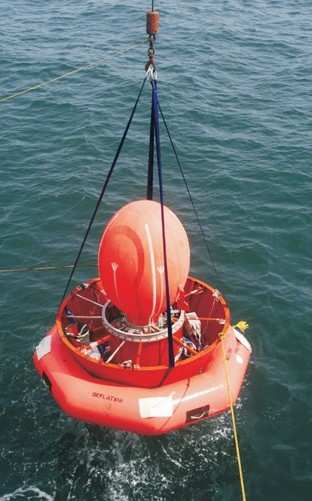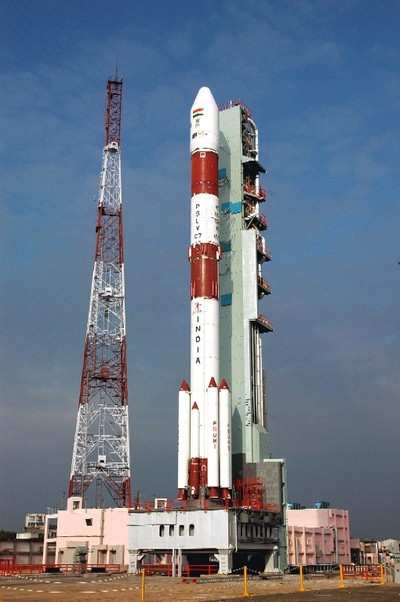Tue, Jan 23, 2007
Major Milestone For Country's Manned Space Program
India's Space Research Organization (ISRO) announced Monday it
has safely deorbited and recovered a capsule launched on January 10
from a facility north of the city of Chennai. The capsule was one
of four payloads aboard the rocket and was part of an effort by the
country to develop a manned spaceflight program.

The 1,210 pound Space Capsule Recovery Experiment (SRE) spent 11
days in orbit before splashing down in the Bay of Bengal yesterday.
(The above picture was taken during capsule recovery testing --
it's not from the actual SRE recovery).
A. Subramoniam, head of the team that designed and built the
capsule at ISRO, told the Sydney Morning Herald, "[It] landed in
the Bay of Bengal ... as per schedule. The mission is a great
success [and] a stepping stone to design and build our very own
reusable spacecraft, and eventually [carry out] manned missions
into space, too."
India's space agency has built and orbited communications
and remote-sensing satellites for years, but this mission marks a
first attempt at deploying a reusable spacecraft.
India's home-grown Polar Satellite Launch Vehicle --
dubbed PSLV-C7 -- carried the capsule aloft along with an
Indian mapping satellite, an Indonesian earth observation satellite
and an Argentinian educational satellite. The four objects were
lifted to a 395-mile polar orbit.

PSLV is ISRO's workhorse launch vehicle. It's a four-stage
rocket using a combination of solid and liquid propellants with a
total lift-off weight of nearly 300 tons. The agency boasts eight
consecutive successful launches with the booster since it
started service in 1994.
The SRE, whose primary mission was to aid India in developing
re-entry procedures and recoverable/reusable space technologies,
also carried two microgravity experiments into space and back to
earth.
Although ISRO officials say the country won't likely put an
astronaut in space before 2014, it says Monday's success will help
the country in its preparations for a 2008 unmanned moon
mission.
More News
He Attempted To Restart The Engine Three Times. On The Third Restart Attempt, He Noticed That Flames Were Coming Out From The Right Wing Near The Fuel Cap Analysis: The pilot repor>[...]
Make Sure You NEVER Miss A New Story From Aero-News Network Do you ever feel like you never see posts from a certain person or page on Facebook or Instagram? Here’s how you c>[...]
From 2009 (YouTube Edition): Leading Air Show Performers Give Their Best Advice for Newcomers On December 6th through December 9th, the Paris Las Vegas Hotel hosted over 1,500 air >[...]
Aero Linx: NASA ASRS ASRS captures confidential reports, analyzes the resulting aviation safety data, and disseminates vital information to the aviation community. The ASRS is an i>[...]
“For our inaugural Pylon Racing Seminar in Roswell, we were thrilled to certify 60 pilots across our six closed-course pylon race classes. Not only did this year’s PRS >[...]
 NTSB Final Report: Rutan Long-EZ
NTSB Final Report: Rutan Long-EZ ANN FAQ: Turn On Post Notifications
ANN FAQ: Turn On Post Notifications Classic Aero-TV: ICAS Perspectives - Advice for New Air Show Performers
Classic Aero-TV: ICAS Perspectives - Advice for New Air Show Performers ANN's Daily Aero-Linx (06.28.25)
ANN's Daily Aero-Linx (06.28.25) Aero-News: Quote of the Day (06.28.25)
Aero-News: Quote of the Day (06.28.25)




